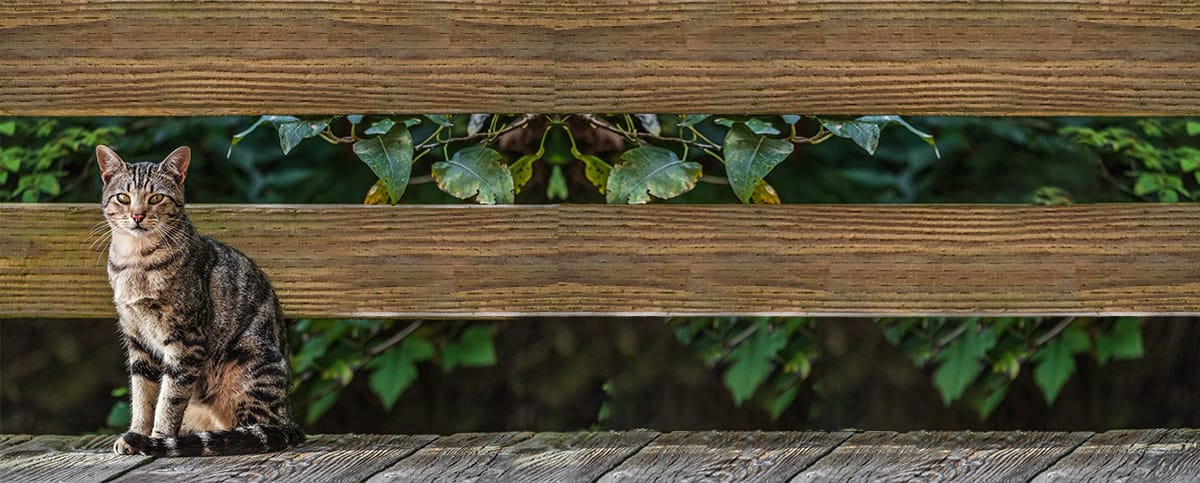CCL Problems has been Dr. Schnirman’s main focus for the past 15 years.
Does your Pet Have CCL Problems?
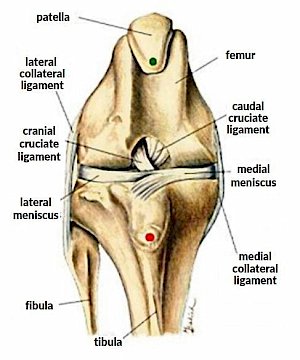 At Summit Boulevard Animal Hospital, Dr. Eric Schnirman has advanced surgical training in orthopedic repairs of dogs and cats. Cranial Cruciate Ligament Ruptures are a very common cause of lameness and osteoarthritis in dogs. This has been one of Dr. Schnirman’s main focus for the past 15 years. He has had advanced training in fracture repair, Tightrope Stabilization of the Cruciate Deficient Stifle and TPLO. At Summit Boulevard Animal Hospital, the Tightrope Procedure for CCL Rupture is offered. Please contact us for a complimentary consultation with your pet for an evaluation and discussion on which surgical procedure would be best for you and your pet.
At Summit Boulevard Animal Hospital, Dr. Eric Schnirman has advanced surgical training in orthopedic repairs of dogs and cats. Cranial Cruciate Ligament Ruptures are a very common cause of lameness and osteoarthritis in dogs. This has been one of Dr. Schnirman’s main focus for the past 15 years. He has had advanced training in fracture repair, Tightrope Stabilization of the Cruciate Deficient Stifle and TPLO. At Summit Boulevard Animal Hospital, the Tightrope Procedure for CCL Rupture is offered. Please contact us for a complimentary consultation with your pet for an evaluation and discussion on which surgical procedure would be best for you and your pet.
What is the cranial cruciate ligament (ACL) and how does it get damaged?
The Cranial Cruciate Ligament (CCL) is the equivalence to the human ACL. The CCL is the most important stabilizing ligament of the knee (stifle) joint. It helps to prevent the natural tendency of the tibial bone from thrusting forward on the femur bone every step your dog takes.
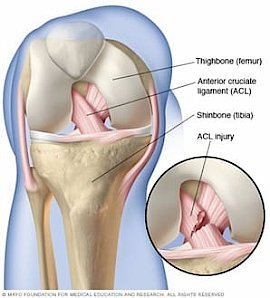 Damage to the cruciate ligament in humans is a common injury caused by trauma such as in athletes (football players) or an accidental slip etc. However, this is not the case in dogs. In dogs, this is a slow and progressive weakening of the ligament almost like fraying of a rope. We do not exactly know the cause of CCL rupture, but speculate many factors, one being from years of constant forward thrust of the tibial bone.
Damage to the cruciate ligament in humans is a common injury caused by trauma such as in athletes (football players) or an accidental slip etc. However, this is not the case in dogs. In dogs, this is a slow and progressive weakening of the ligament almost like fraying of a rope. We do not exactly know the cause of CCL rupture, but speculate many factors, one being from years of constant forward thrust of the tibial bone.
Symptoms and Identification of CCL Rupture
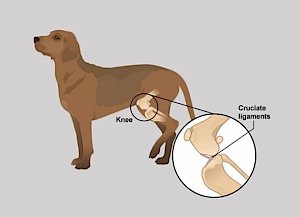 Frequently, the first sign of CCL rupture is an acute lameness in which the dog may cry out and is suddenly holding up one of the hind limbs due to pain. Other times with a more chronic issue in which the CCL is becoming more and more frayed, dogs will have a chronic soreness in the hind limb that is affected. If your dog has any of these symptoms, your pet should be taken to your veterinarian for evaluation. Upon evaluation of your dog by the veterinarian, certain simple tests will be performed and likely, sedated X-rays will be performed to get a more clear diagnosis.
Frequently, the first sign of CCL rupture is an acute lameness in which the dog may cry out and is suddenly holding up one of the hind limbs due to pain. Other times with a more chronic issue in which the CCL is becoming more and more frayed, dogs will have a chronic soreness in the hind limb that is affected. If your dog has any of these symptoms, your pet should be taken to your veterinarian for evaluation. Upon evaluation of your dog by the veterinarian, certain simple tests will be performed and likely, sedated X-rays will be performed to get a more clear diagnosis.
Surgical Repair of CCL Rupture (ACL rupture)
CCL ruptures can be treated effectively, most commonly through surgery. Here are the most common surgical techniques
- Extracapsular repair/ Lateral Suture Technique - The oldest of the CCL repair. In simplest terms, a suture material (artificial cruciate ligament) is placed from the back of the knee joint around to the front of the knee acting like an artificial CCL. One small bone tunnel is necessary to perform this procedure.
- TPLO and TTA - Both the TPLO and TTA surgery may be considered the gold star standard in cruciate rupture, it is also considered the most invasive and most expensive procedures. Bones will need to be cut into 2 parts and metal plates placed in the knee. If all goes as planned, the success rate is very high.
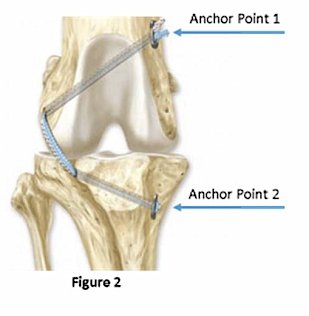 Tightrope Technique - The Tightrope technique, which is the latest procedure, was designed to be a minimally invasive procedure that augments the principles of the lateral suture technique by increasing stabilization from bone to bone fixation at highly researched isometric points on both the femoral and tibial side of the limb. Newer and improved stronger implants that were developed for this technique will allow for stronger stabilization of the knee. This stronger and improved material stabilizes the knee to allow for improved peri-articular fibrosis in the post-operative recovery phase allowing our patient to get back to a more normal life prior to the ligament rupture.
Tightrope Technique - The Tightrope technique, which is the latest procedure, was designed to be a minimally invasive procedure that augments the principles of the lateral suture technique by increasing stabilization from bone to bone fixation at highly researched isometric points on both the femoral and tibial side of the limb. Newer and improved stronger implants that were developed for this technique will allow for stronger stabilization of the knee. This stronger and improved material stabilizes the knee to allow for improved peri-articular fibrosis in the post-operative recovery phase allowing our patient to get back to a more normal life prior to the ligament rupture.
Tightrope Surgical Repair of Cranial Cruciate Ligament Dog Knee Animation
Cookies on this website are used to both support the function and performance of the site, and also for marketing purposes, including personalizing content and tailoring advertising to your interests. To manage marketing cookies on this website, please select the button that indicates your preferences. More information can be found in our privacy policy here.
We've upgraded our online store!
Ordering your pet's favorite food and medicine is now easier than ever.
Order Food & Meds
Quick & Easy Registration

Please use the phone number and email you currently use for hospital communications to link your account!
Linked Pet Records & Rx

Your pet's prescriptions and records will be waiting for you!
Pawsome
Savings!

AutoShip discounts, promotions on your favorite products and more!

